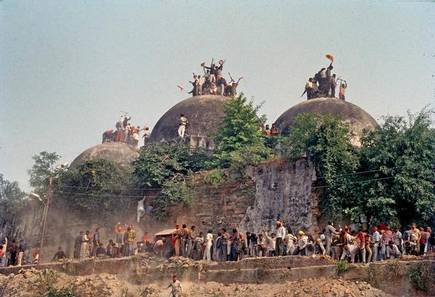
Source : Google photo of the Golden temple in Amritsar, India
Synopsis : I usually write about social issues so I thought what could be more social than food in India where people really go out to enjoy food in other’s company which is a great social event. India is known for its great food but only very few who have visited have learned its rich diversity in food and its very rich culinary history where various recipes from various parts of the world have been blended to create something unique to each region.
You will find dazzling varieties of food with the local twist in each part of the great country called India , some vegetarian and others non vegetarian that will surprise you and your taste buds in a way that will make you feel that you are literally in heaven. That is why I named this blog The heavenly foods of India that will show you foods from Imphal to Chennai and Bengaluru in the south. The videos are self explanatory so do not need my comments.
I have tasted foods in many countries but none compare to the taste and quality of Indian food some of which are displayed in the following videos. It is not for nothing that India is called the country of spices but what is amazing is how they use the spices to bring out so unique taste in food that only Indians know how.
But I start the blog with not food but the visit to Amritsar Golden temple and the Sikh religion that makes Amritsar the holiest city of their very unique religion. In the later part of the video the reporter will also show you a very unique feature of Sikh religion that welcomes anyone irrespective of their religion, caste, color, race or ethnicity to their temple and feeds everyone who so wishes all day , every day of the year. They never stop. You will see them feeding Hindus, Muslims, Christians, Buddhists, Jains, Jews and the Sikhs all together because they welcome all. This is a very unique feature of their faith. Other faiths have a lot to learn from them about their tolerance of other faiths.
Most people outside India do not know much about the Sikh religion and how it originated hundreds of years ago there , what are its main features and why the Sikhs wear turban and do not shave their facial hair. Some Sikhs living in the United States have been mistakenly identified as Muslims and have been attacked by the ignorant people who have never heard about their great religion.
Here in the Philippines the Sikhs are misunderstood and stereo typed as Indians . They are Indians but they are unlike any other people in India where all the religions of the world thrive and co exist peacefully although there have been some communal tensions due to some quarrels because of some misunderstanding or fanatical zeal that I will write about here.
In summary, some Sikh militant activists rallied to separate from India and form their own country, Khalistan and took refuge in the Golden Temple of Amritsar, from where they tried to mobilize all Sikhs to their cause through an armed revolt. The Indian army encircled the temple and, after a long battle, killed all the militants but the temple was also damaged by the fighting. This undermined the feeling of some Sikhs in the armed forces who tried to reach Amritsar to provide military assistance to the rebels, but were arrested. The Sikhs who were the bodyguards of Prime Minister Indira Gandhi murdered her in New Delhi because she had ordered the attack on their temple in Amritsar. Later, the temple was repaired thoroughly.
Birth of Sikhism in India: (source: Wikipedia)
Sikhism is the fifth largest religion in the world, with about 20 to 30 million Sikhs. There are about 500,000 Sikhs each in the United States and Great Britain. Here are 5 things to know about faith. The sacred book of Sikhs, “Guru Granth Sahib,” teaches that there is one God, that men and women are fundamentally good and equal before God, that everyone has direct access to God. and that the way to get closer to God is to serve our fellow men. Sikh religion was founded in 1469 by Guru Nanak in the Punjab region of India. Guru Nanak and his nine successors shaped the fundamental beliefs of religion in the sixteenth and seventeenth centuries.
Sikhism has evolved in times of religious persecution. Two of the Sikh gurus – Guru Arjan (1563-1605) and Guru Tegh Bahadur (1621-1675) – were tortured and executed by the Mughal rulers after refusing to convert to Islam. The persecution of the Sikhs triggered the founding of the Khalsa as an order to protect freedom of conscience and religion, endowed with the qualities of a “Sant-Sipāhī” – a holy soldier. The Khalsa was founded by the last Sikh guru, Guru Gobind Singh.
All Sikhs must believe in five K (Kirpan, Kachcha, Kesh, Kara and Kanghi), which means that they must always wear a dagger or a small knife (Kirpan), an undergarment called kachcha, should not cut hair or shave (Kesh), wear a steel or silver bracelet (Kara) and hold a comb in the hair (Kanghi). They are forbidden to drink alcohol, cut their hair, have sex with Muslims, commit adultery, eat halal meat and have priests.
The Muslims who invaded India several centuries ago brought with them the ideology that Hindus must accept Islam, either by coercion or by force, so they massacred the population en masse while they refused to do it. A particular group of Hindus who were so persecuted and threatened with death fought back and swore never to give up their faith, so they became armed and protected themselves.
They lived a harsh life so they grew their hair and beard and learned martial art to protect themselves and their women laying the foundation of a new faith called Sikhhism and built a magnificent temple in Amritsar that they covered entirely with gold. This temple keeps the original and sacred scripture called Guru Granth sahib that is read everyday throughout the year. This recitation has not stopped since the temple was built centuries ago.
It is the sacred duty of all Sikhs to visit the temple at least once in their lifetime no matter where in the world they live. Photography is not allowed inside the temple so you can’t see the splendor and breathtaking view from inside but a visit to the grounds in itself is awe inspiring as the video will show you.
The Sikhs carry Hindu names as a testament to the fact that they were Hindus but with a twist. They spell their names slightly differently from Hindus to differentiate themselves from the rest so Jitendra becomes Jatinder, Surendra becomes Surinder etc. Sikhs are wonderful people. They are fierce fighters in the defense forces of India. They are very hard working and honest and they are very intelligent and have attained very high posts in the government. One became the President of India and another became the most decorated chief of the Indian Air Force. They have also spread out through out the world and can be found in many countries where they have settled down.
So I hope you will learn something about the great Sikh people by watching this video.
1. The Golden temple in Amritsar, Punjab, India
2. Food in Chennai , South India
3. Food in Bengaluru in Karnataka, South India
4. Food in Imphal in North Eastern State Manipur, India.
Note: Imphal is the capital of Manipur State in northeastern India. Netaji Bose and his army fought the British and deployed the Indian flag for the first time after victory there though he did not succeed to liberate all of India. The inhabitants of this region seem different from the rest of the Indians because of their ethnic origin in the mountain tribes of Myanmarand southern China. Their food is also different from other spicy dishes in the country, but it is delicious.
Note : My blogs are also available in French, Spanish, German and Japanese languages at the following links as well as my biography:
 via
via 